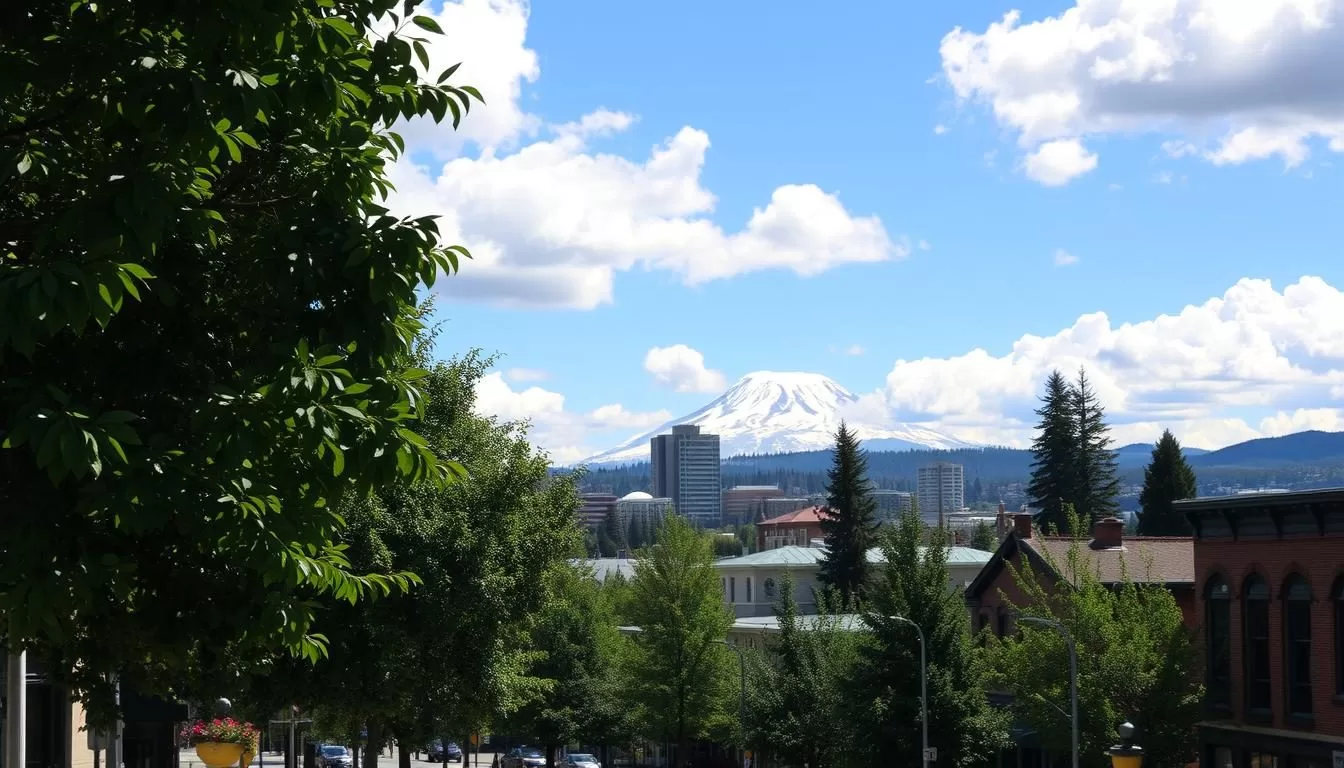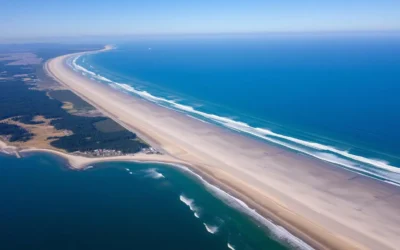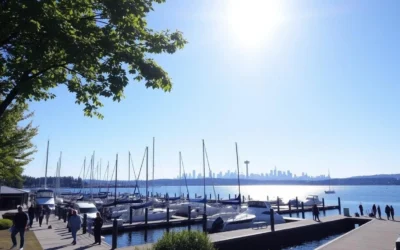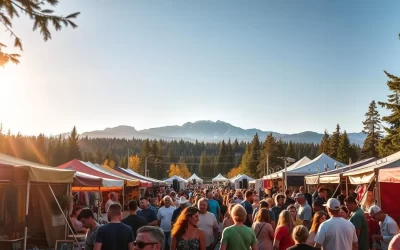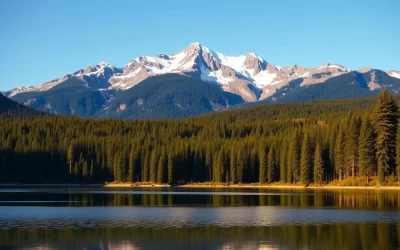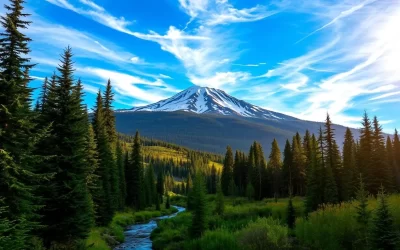When you’re planning a trip to Washington, understanding the climate and seasons is crucial for a memorable experience.
The state’s diverse geography creates distinct weather patterns across regions, from the rainy Pacific coast to the arid eastern plains. This variation means that the trip you plan should be heavily influenced by the time of year you choose to visit.
You’ll find that Washington’s four distinct seasons offer a range of experiences, whether you’re looking for outdoor adventures, cultural events, or witnessing natural phenomena like wildflower blooms or fall foliage. Understanding these climate variations is key to packing appropriately and planning activities that suit your travel goals.
Understanding Washington’s Diverse Climate
The Evergreen State’s climate is as varied as its landscapes, ranging from temperate rainforests to arid deserts. Washington’s diverse topography, with the Cascade Mountains playing a pivotal role, leads to a multitude of weather patterns across the state.
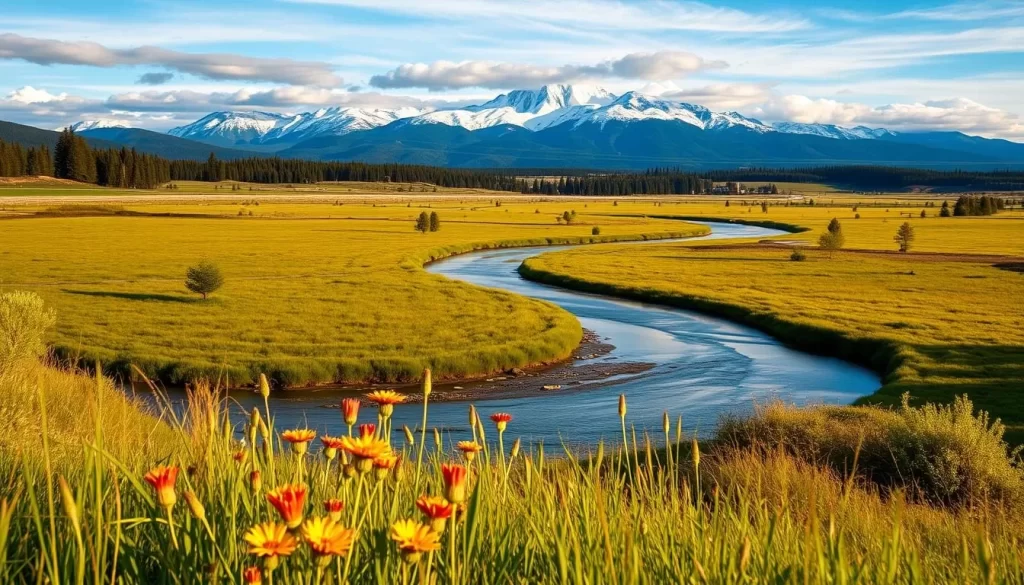
West vs. East: The Cascade Divide
The Cascade Mountain range creates a dramatic divide in climate conditions. The western side, influenced by the Pacific Ocean, tends to be cooler and wetter, featuring mountains, ocean beaches, and temperate rainforests. In contrast, the eastern side is generally drier, with hot temperatures in the summer and cold winters, characterized by arid high desert and pine forests.
This divide results in different conditions for various activities and ecosystems on each side of the Cascades.
Microclimates and Regional Variations
Washington’s diverse topography also gives rise to numerous microclimates, where weather patterns can vary significantly over short distances. The Olympic Peninsula, for example, experiences a rain shadow effect, with the northeast side and the San Juan Islands receiving less rain and enjoying more sunny days. Understanding these microclimates and regional variations is crucial for appreciating the complexity of Washington’s seasons and planning activities accordingly.
Weather Patterns Across Washington State
From the Pacific Ocean’s moderating effect to the impact of mountain ranges, Washington’s weather is multifaceted. You will explore how different factors come together to create the state’s unique climate conditions.
Pacific Ocean Influence
The Pacific Ocean has a significant moderating effect on Washington’s coastal regions. The cool ocean currents and the marine layer help regulate temperatures, making summers milder and winters warmer compared to inland areas. This influence contributes to the state’s famously mild but wet climate, with the ocean’s presence being a key factor in shaping the regional weather patterns.
The prevailing winds, known as the “Puget Sound Convergence Zone,” bring moist air from the ocean, resulting in characteristic rain and cloud cover across Western Washington. This phenomenon is crucial in understanding the weather patterns in the region.
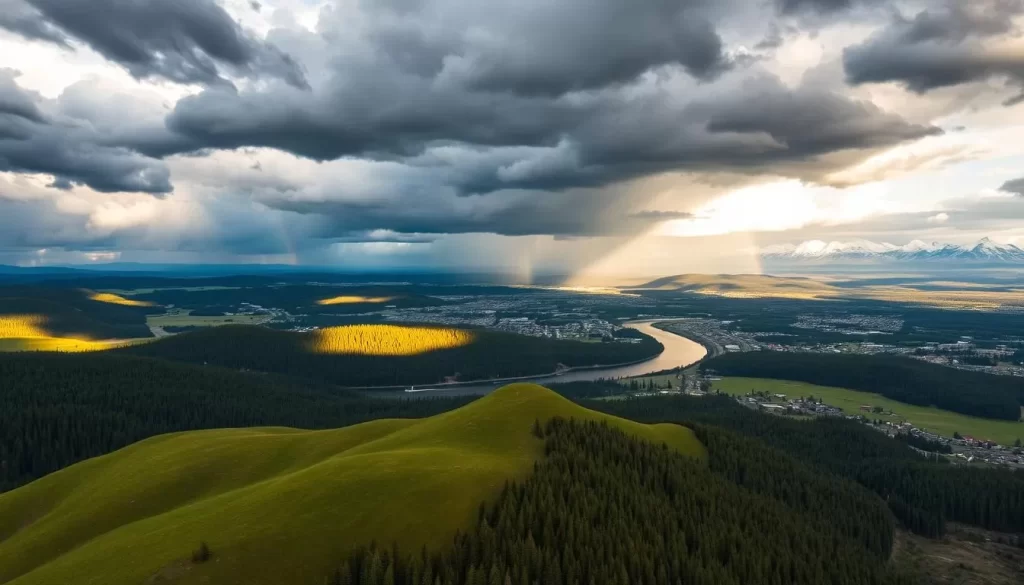
Mountain Effects on Weather
Washington’s mountain ranges, including the Cascades, play a crucial role in shaping the state’s weather. These mountains force warm, moist air to rise, cool, and condense, resulting in significant precipitation on the western slopes. This orographic lifting leads to dramatic differences in weather conditions over short distances, creating a variety of microclimates across the state.
- The rain shadow effect on the eastern side of the mountains results in drier conditions.
- Orographic lifting enhances precipitation on the western slopes.
- Mountainous terrain contributes to diverse weather patterns across the state.
Rainfall Distribution Throughout the Year
The distribution of rainfall in Washington State follows a fairly consistent pattern, with most precipitation occurring between October and March. November is typically the wettest month, while summer months tend to be drier, although occasional showers still occur. Understanding this pattern can help you plan your activities and make the most of your visit.
By recognizing the factors that influence Washington’s weather, you can better appreciate the state’s diverse climate and make informed decisions about the best times to visit different regions.
Summer in Washington: Peak Season Bliss
Summer in Washington is a time of long, sunny days and warm temperatures, making it ideal for exploring the state’s diverse landscapes. With the Pacific Ocean’s cooling influence on Western Washington, temperatures remain comfortably warm for much of the summer. In contrast, Eastern Washington experiences higher temperatures, often reaching 100 degrees during July and August.
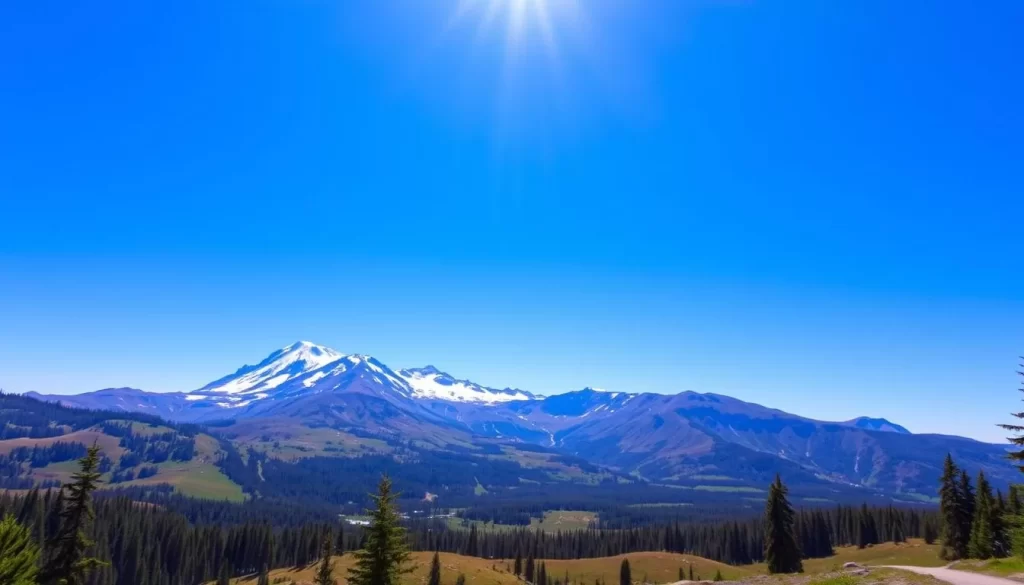
June Through August: What to Expect
By mid-June, temperatures have started to climb across the state, with blue skies and limited showers characterizing the summer months. You’ll discover why summer (June through August) is considered the peak season for Washington travel, with long days of sunshine and comfortable temperatures throughout most of the state.
During these months, Western Washington enjoys mild summer temperatures, typically ranging from 70-80°F, while Eastern Washington can experience much hotter temperatures, often between 85-100°F.
Managing Summer Crowds and Peak Season
Travel to Washington is busiest from Memorial Day through Labor Day, peaking in July and August. Summer draws millions of visitors to destinations like Seattle, Mount Rainier National Park, Olympic National Park, and Washington’s islands. To manage the summer crowds, it’s essential to plan ahead.
You’ll learn strategies for navigating popular destinations during peak season, including making advance reservations for accommodations, ferry crossings, and popular attractions.
Fall in Washington: Colors and Comfort
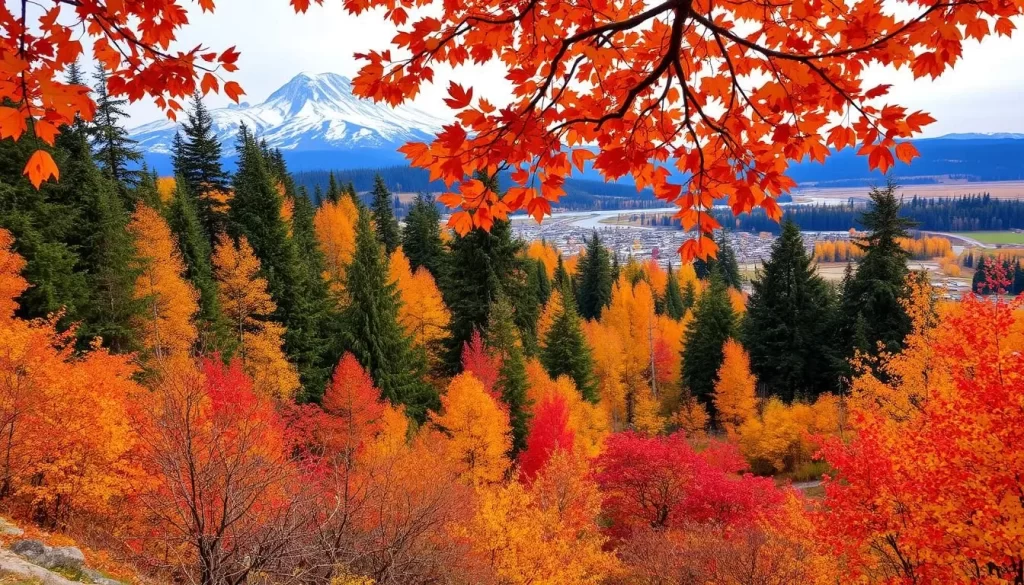
As summer fades, Washington state transforms into a vibrant canvas of colors during the fall season. This transformation brings a unique blend of comfort and visual splendor, making it an ideal time to visit. The fall season, which spans from September to November, offers pleasant weather conditions, with warm days and cool nights, alongside spectacular fall colors throughout the state.
The absence of summer crowds adds to the allure, allowing for a more peaceful experience in the state’s natural beauty spots.
September Through November Weather
Early fall in Washington is characterized by mostly sunny and dry conditions, making September an excellent month for outdoor activities. As October arrives, the temperatures cool down, and the fall colors peak, creating a picturesque landscape. By November, the rain starts to increase, especially in Western Washington, while Eastern Washington experiences cooler temperatures but often remains dry and clear.
Harvest Festivals and Fall Activities
The season is also marked by various harvest festivals and activities, including wine harvest tours, apple picking, and visits to the state’s many orchards. These activities not only showcase the state’s agricultural bounty but also provide a cozy and welcoming atmosphere, embracing the comfort of the season.
Winter Adventures in the Evergreen State
Winter in Washington State is a season of contrasts, with the weather varying greatly from the coast to the mountains. As you explore the state’s diverse landscapes during the winter season, you’ll discover a range of experiences tailored to different interests and preferences.
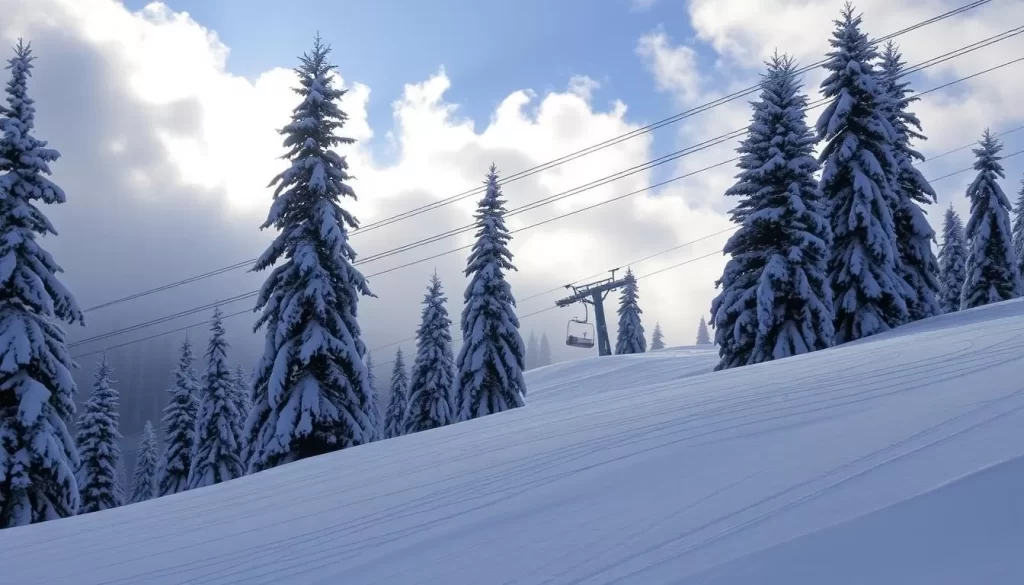
December Through February Conditions
During the winter months (December through February), Washington State’s weather is characterized by rain in the western parts, with temperatures in the 30s-40s°F, while the mountainous areas and Eastern Washington experience significant snowfall and colder temperatures. This variation creates a diverse range of conditions for different activities.
Snow Sports and Cozy Retreats
The season offers excellent opportunities for snow-based sports, including skiing and snowboarding at renowned resorts like Stevens Pass, Crystal Mountain, and Mt. Baker. Beyond the thrill of winter sports, you can also enjoy cozy retreats throughout the state, from charming mountain lodges to waterfront accommodations perfect for activities like storm watching along the Pacific coast.
Spring Renewal: Blossoms and Mild Days

Spring in Washington is a time of renewal, marked by colorful blossoms and gradually warming temperatures across the state. This season is characterized by mild temperatures and fewer crowds, making it an ideal time for outdoor activities.
March Through May Weather Patterns
During spring, Washington experiences a decrease in rainfall as the season progresses, although occasional showers are still common, especially in Western Washington. In the mountains, light snow is possible into early spring.
The snowpack formed over winter can take until summer to thaw out, creating a varied landscape where lowland areas warm up while mountain passes remain snowy.
Wildflowers and Spring Activities
Spring brings spectacular wildflower displays across Washington, from the tulip fields of Skagit Valley to the desert blooms of Eastern Washington. This is a great time to enjoy hiking and other outdoor activities in the state’s scenic trails and parks.
With mild temperatures and smaller crowds, spring is an excellent season to explore charming towns and enjoy the natural beauty of Washington without the peak season rush.
As you plan your trip, remember to pack layers and gear for potential rain showers. The ever-changing spring weather in Washington requires a flexible itinerary, but the rewards are well worth it.
Best Months for a Weather-Savvy Trip to Washington
Determining the best months for a weather-savvy trip to Washington involves considering factors beyond just temperature. Theideal weatherfor traveling typically includescomfortable temperatures, low humidity, and sufficient sunshine.
When we think about the “ideal weather” for traveling, we want it to be just right—not too hot, not too cold, with minimal rain and plenty of sunshine. Perfect travel days are those with blue skies and mild temperatures that let you explore a new destination or lounge on the beach. That said, weather is subjective; some people love the hot sun, while others enjoy the cool fall. Understanding what weather you prefer can help create the perfect trip.
July and August: Ideal for Outdoor Exploration
July and August consistently rank as the best months for a weather-savvy trip to Washington. These summer months offer warm days, minimal rainfall, and long daylight hours, making them ideal for outdoor exploration. The warm weather is perfect for hiking, biking, and enjoying the state’s many natural attractions.
May, June, and September: The Perfect Shoulder Seasons
The shoulder season months—May, June, and September—offer a compelling balance of good weather, lower crowds, and reduced prices. These shoulder seasons are an excellent choice for travelers who want to avoid the peak season crowds while still enjoying comfortable temperatures and outdoor activities.
Weather Considerations for Specific Activities
When planning your trip, it’s essential to match your preferred activities with the best weather conditions. For example, if you’re planning hiking adventures, the dry summer months might be best. For wine tasting tours, the fall season, with its harvest festivals, could be more appealing. Understanding the time to visit based on your activities will help you make the most of your trip.
Regional Weather Guide: Where to Go When
The Evergreen State’s diverse geography leads to a range of weather patterns across its regions, which you should consider when planning your visit. Washington State’s climate varies significantly from one region to another, making it essential to understand these variations to make the most of your trip.
Puget Sound and Seattle Area
The Puget Sound and Seattle area is known for its mild temperatures throughout the year. However, this region experiences significant rainfall from October through March. If you’re planning to visit Seattle, consider the summer months for dry weather or the shoulder season for fewer crowds.
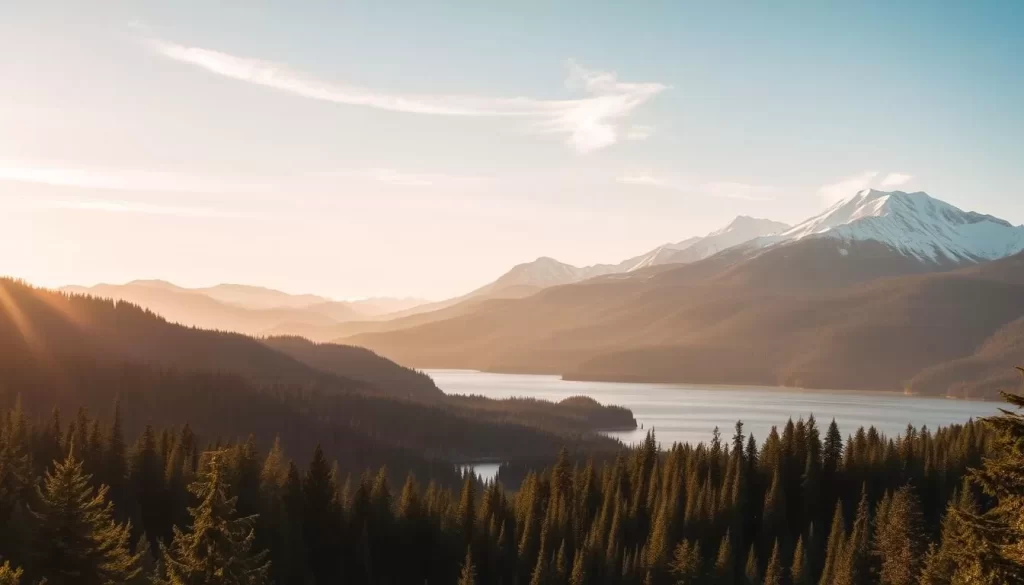
Olympic Peninsula and Coast
The Olympic Peninsula is a region of dramatic climate variations. The temperate rainforests on the western side receive over 140 inches of rainfall annually, while the “banana belt” near Sequim enjoys a much drier climate due to the rain shadow effect. This variation makes the Olympic Peninsula a fascinating destination, with activities available across different weather conditions.
Eastern Washington and Wine Country
Eastern Washington and its wine country experience dramatic seasonal shifts, with hot, dry summers giving way to cold winters. Unlike the western part of the state, Eastern Washington enjoys more sunshine throughout the year. This region is ideal for visiting during the spring for vineyard activities or during the fall for harvest festivals.
| Region | Best Time to Visit | Weather Conditions |
|---|---|---|
| Puget Sound and Seattle | Summer or Shoulder Season | Mild temperatures, rainfall in winter |
| Olympic Peninsula | Year-round, depending on activity | Varied; rainforest to dry areas |
| Eastern Washington | Spring or Fall | Hot summers, cold winters, sunny |
Understanding these regional weather patterns can help you plan your trip to Washington State more effectively, ensuring that you visit the right places at the right time.
Avoiding Rain and Embracing Sunshine
To make the most of your trip to Washington, it’s essential to know when to expectrainand sunshine. Understanding theweatherpatterns can help you plan your activities and make the most of your time in the Evergreen State.
Navigating the Rainy Season
Washington’srainy seasontypically runs from October to March, with November being the wettest month in most regions. During thistime, you can expect overcastskiesand regular rainfall. However, this doesn’t mean you should avoid visiting during this period entirely. With the right gear and indoor alternatives, you can still enjoy your trip.
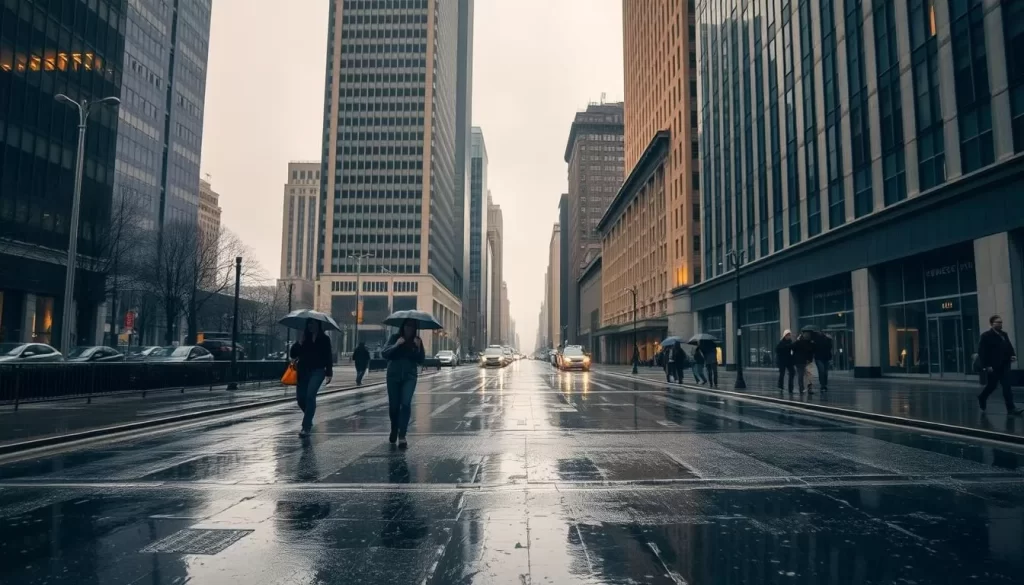
Finding Sun in the Pacific Northwest
Despite therain, there are areas in Washington that receive plenty of sunshine. The Sequim-Dungeness Valley, for example, is known for its dryweatherconditions, receiving just 16 inches ofrainannually due to the Olympic rain shadow. By planning your itinerary around these sunny spots, you can make the most of your trip and enjoy the best of Washington’sweatherconditionsat the righttime.
Planning Your Weather-Perfect Washington Trip
With its diverse climate, Washington requires careful planning to ensure a weather-perfect trip. To make the most of your adventure, consider the weather carefully when planning your trip. You’ll want to choose the best time to visit, taking into account the various conditions across the state.
Utilize weather apps and seasonal information to determine the ideal months for your visit. This will help you anticipate what to expect and pack accordingly. Packing layers is advisable for easy temperature control.
Some key considerations for your trip include:
– Practical tips for planning around weather conditions, including resources for long-range forecasts.
– A comprehensive packing guide for different seasons and regions.
– Building flexibility into your itinerary for unpredictable conditions.
– Combining regions with complementary weather patterns to maximize your trip.
– Balancing weather considerations with other factors like budget and crowds.
By considering these factors and traveling during the shoulder seasons, you can enjoy great conditions and lower prices, making the most of your time in Washington and enjoying a wide range of activities on your trip.
The above is subject to change.
Check back often to TRAVEL.COM for the latest travel tips and deals.
Here are some Tours & Sightseeing suggestions that might pique your interests!
